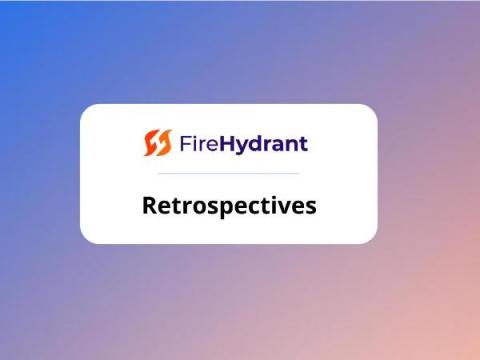Operations | Monitoring | ITSM | DevOps | Cloud
Latest News
Accelerate incident investigations with Log Anomaly Detection
Modern DevOps teams that run dynamic, ephemeral environments (e.g., serverless) often struggle to keep up with the ever-increasing volume of logs, making it even more difficult to ensure that engineers can effectively troubleshoot incidents. During an incident, the trial-and-error process of finding and confirming which logs are relevant to your investigation can be time consuming and laborious. This results in employee frustration, degraded performance for customers, and lost revenue.
The Pros and Cons of Embedded SREs
To embed or not to embed: That is the question. At least, that’s one of the questions that companies have to answer as they decide how to implement Site Reliability Engineering. They can either embed SREs into existing teams, or they can build a new, separate SRE team. Both approaches have their pros and cons. The right strategy for your company or team depends, of course, on your needs and priorities.
Product update: ensure consistent data across all your retros with two new features
FireHydrant captures your incident, from declaration through remediation, and gives you a framework to run your retrospectives. But retrospectives are only as effective as their inputs. Now we're delivering a better way to learn from and analyze retrospectives by guaranteeing consistent, structured, and sufficient data from your team.
OnCallogy Sessions
Being on call is challenging. It’s signing up to be operating complex services in a totally interruptible manner, at all hours of the day or night, with limited context. It’s therefore critical to have proper on-call on-boarding procedures, offer continuous training sessions, and continuously improve documentation. We also need to make sure people feel safe by providing ways to reduce their stress, and make room for questions to surface all sorts of uncertainties around our operations.
Conflict Management and the Major Incident Management Process
xMatters remains a G2 Grid Report Leader
Worldwide businesses and their technical resources use G2, the leading business solution review platform, to analyze software, gather user feedback, and make informed decisions about technology. Although we value all the recognition we’ve earned on G2 over the years, there’s one that always stands out and makes us feel extra proud of what we’ve accomplished so far.
Debug issues and automate remediation with Shoreline and Datadog
Shoreline is an incident response automation service that enables DevOps engineers and site reliability engineers (SREs) to quickly debug and remediate issues at scale and develop automated routines for incident management. Using Shoreline’s proprietary Op language, customers can run debug commands across all their hosts simultaneously and then deploy custom scripts via Actions to trigger automated remediations.
Intelligent Alert Grouping Series Summary
Welcome to our final post in our EI Architecture Series on Intelligent Alert Grouping. I hope you’ve enjoyed this series, and if you’d like to take a look at any of our prior posts, please use the ei-architecture-series tag. Let’s take a moment and recap everything we’ve learned.










